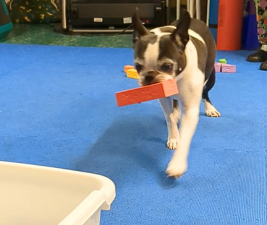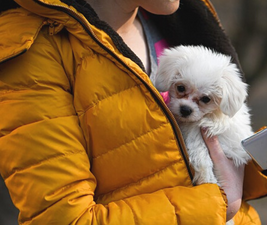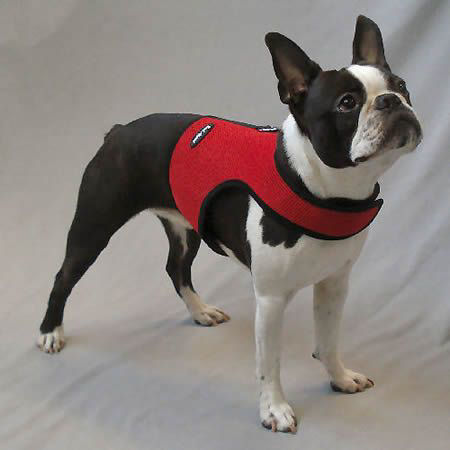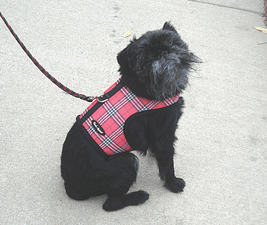Small dogs are just as smart (if not smarter) than medium or large dogs. Many breeds of small dogs had the job of controlling pests, like rats. They were bred to work hard and independently, to solve problems and figure out ways to outsmart their prey. So why don’t more small dog people get involved in dog training and dog performance sports? Why don’t people expect more from small dogs?
We see lots more people with medium or large dogs in our training classes than small dogs. Which contradicts the demographics in the nation, since there are more small dogs than any other group. We think we know why. People know medium and large dogs must be trained because they cannot physically control them. Small dog people can. If a little dog’s being obnoxious, the person can just pick them up and remove them from the situation.
While we understand what’s going on, we wish it weren’t so. It deprives both people and dogs of the fun they could be having together. If you’ve never seen your dog’s glee when it figures out a new trick or behavior, you’re missing out.
Try some tricks
Almost every dog, large and small, knows the basics; sit, down, wait, off, etc. But what about all the adorable things your dog does spontaneously? Have you ever wished you could capture those little behaviors and teach your dog to do them on command? You can! It’s really easy.
Just like it’s actually easy to teach your dog a “polite greeting” for occasions when you have visitors, or meet someone when out and about. It just takes a few minutes a day, it’s a lot of fun, and your dog will be happier when they know what’s expected of them. It leads to a richer, bigger life for both of you.
Smart dogs are troublemakers
The smarter a dog is, the more likely they are to find ways to get into trouble. They’re not content to just lounge around and eat bonbons. They’re curious about the world and want to explore. You may not think it’s exploring when your dog topples the bathroom wastebasket to see what’s inside. But your dog does!
Channeling your dog’s natural curiosity into learning can be a great outlet. And only your imagination limits what you can teach your dog. If you want to see a great example of how little “tricks” can lead to big things, watch the winner of the 2022 AKC Virtual Trick Dog Competition. Maddie-Moo, an Australian Terrier, won with “Dogwarts: School of Witchcraft” routine. This little bitty dog did some wonderful tricks – that your dog can do, too!
Start today
If you watch that video and think to yourself “My dog can do that!” You’re absolutely right. You can start right away – you have everything you need. A good place to start is by teaching your dog to touch a “target” – which can be something as simple as the (clean) lid of a yogurt container. We talked about it in a 2-Minute-Dog-Training tip here.
It’s called 2-Minute Training because that’s all you need. Dogs don’t have the attention span or the focus to concentrate for long stretches. And they don’t need to. With the right motivation (treats, toys, pets, praise), dogs are very willing “workers” and love interacting with you.
You don’t want your dog to fall into the stereotype of “obnoxious little dog.” Expect more from your small dog. You and your dog can do it!
Enjoyed this post? Click here to sign up for the weekly newsletter and never miss another!












